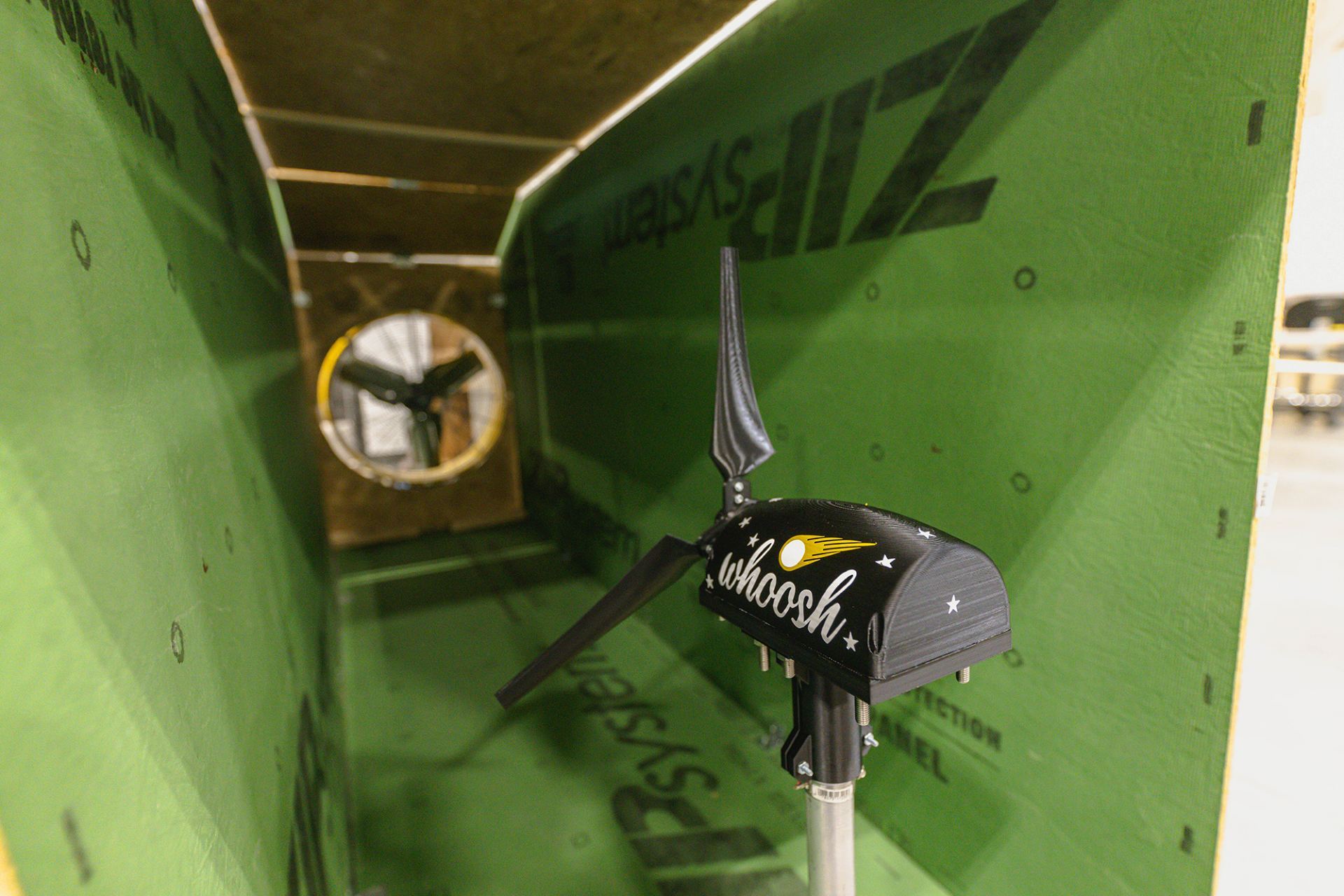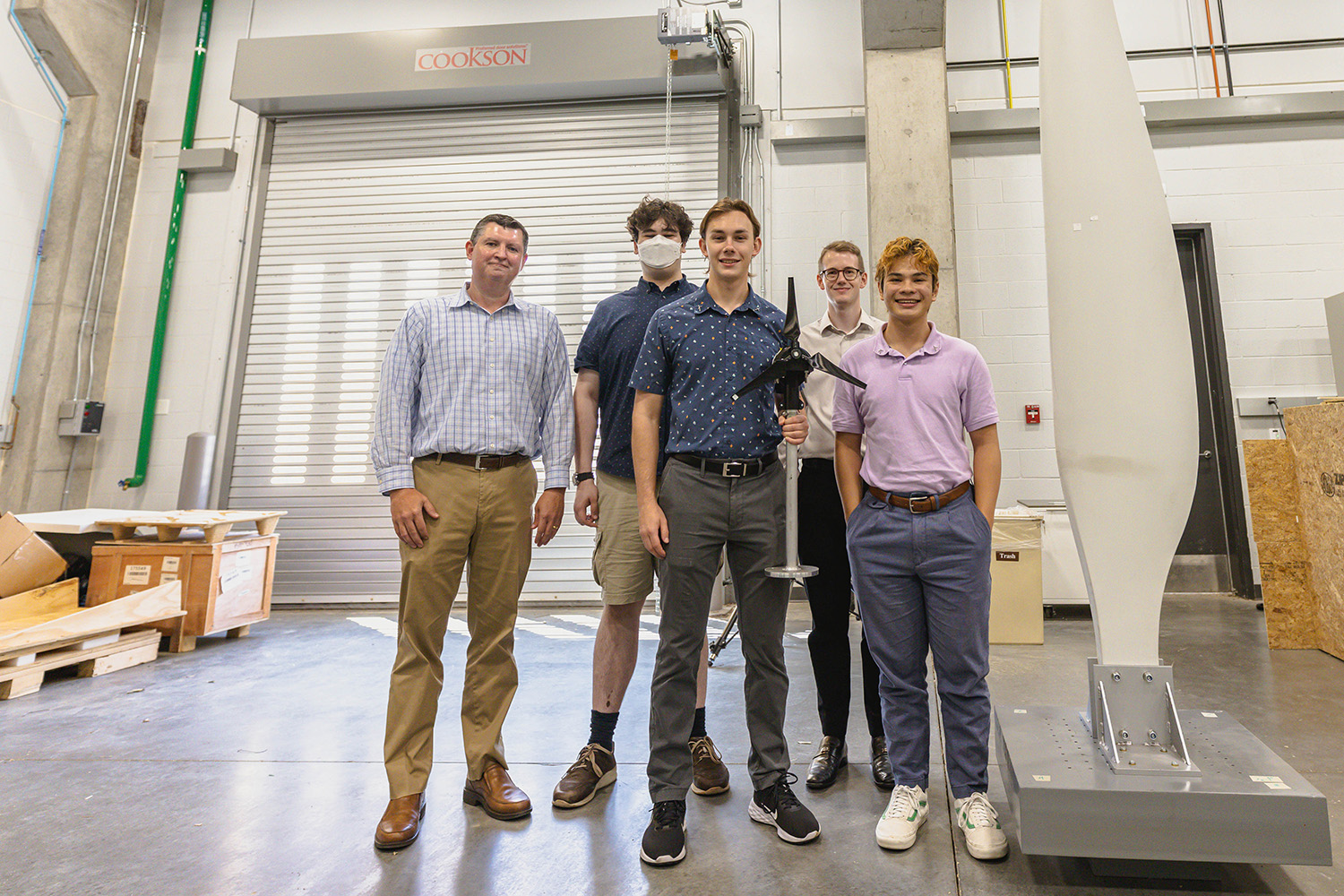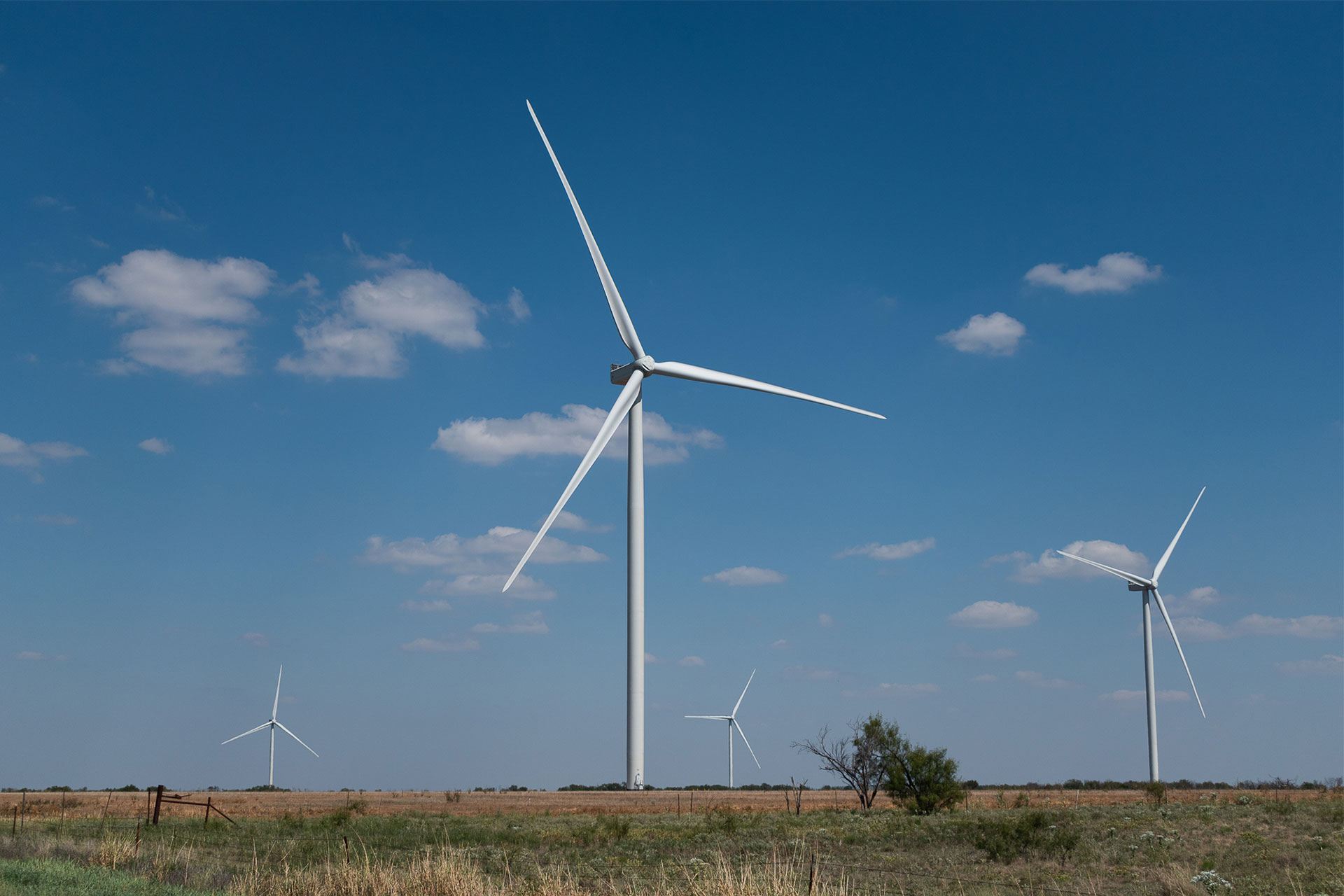
National Turbine Competition Stirs Up UTD Enthusiasm for Wind Energy

As an undergraduate, Thor Westergaard BS’21 was unsure that electrical engineering was the right major for him. That changed, however, after he and his faculty advisor formed a University of Texas at Dallas team to build a model wind turbine as part of the U.S. Department of Energy (DOE) Collegiate Wind Competition (CWC).
How To Join
Interested in joining the UT Dallas Collegiate Wind Competition team? Students from all majors are welcome. The team needs students with a variety of skills, including those who can work on planning, community outreach, and geographic and financial analysis for a theoretical wind farm. Fill out an interest form. Students also can join the Wind Energy Club’s Discord server. For more information, email dan@utdallas.edu or jose@utdallas.edu.
“As we started working on the project, I started feeling engaged with the engineering concepts I learned in my classes. Engineering became less of a chore and more of a passion,” Westergaard said. “It was like learning guitar; we went from learning the chords to actually riffing a little bit.”
Two years later, Westergaard is an electrical engineering doctoral student who serves as an advisor to this year’s CWC team. He and other students also formed the Wind Energy Club, an official student organization, to support the competition effort.
As a “learn-along” team in last year’s CWC, the students drafted a conceptual design for a small-scale turbine, 3D-printed the parts and developed the design for the blades. At a May event, the prototype produced high power output and withstood wind speeds of over 30 miles per hour. Based on the prototype’s performance, the DOE selected the team as one of 30 official teams that will work through the current academic year to compete in 2023. They hope to be one of the 12 finalists selected in early 2023 that will participate in the next phase of the competition and present their work at the American Clean Power Association’s CLEANPOWER Conference & Exhibition next May.
Dr. Todd Griffith, the team’s faculty advisor, said starting UTD’s first team required a significant commitment from students.
“For a first-year team to make it through all these steps was a huge accomplishment,” said Griffith, associate professor of mechanical engineering in the Erik Jonsson School of Engineering and Computer Science. “I’m super proud of them.”

Dan Bouzolin, mechanical engineering senior and a team leader, said he became interested in the renewable energy industry while working in Griffith’s lab.
“I’m interested in wind energy as a sustainable form of alternative energy,” said Bouzolin, who won an Undergraduate Research Scholar Award last year. “It’s important that we build this group and continue to support the next generation of sustainable engineering in America.”
Working in Griffith’s lab also sparked mechanical engineering senior Jose Marquez’s interest in wind energy. He worked as an intern at the National Renewable Energy Laboratory over the summer and received the 2022 Kurz Wind Scholarship.
“When I came to UTD, I wasn’t sure what I wanted to do with the mechanical engineering degree I was working toward. My interest in sustainability led me to Dr. Griffith’s wind energy research lab,” said Marquez, a student lead for the competition team. “My experiences with Dr. Griffith and the Collegiate Wind Competition have helped cultivate a passion for wind energy. I would love to pursue a career in wind energy.”
Electrical engineering junior Fernando Harmjanz, electrical team lead, said the project has been a valuable learning experience. Currently, he and teammates are exploring constructing their own generator for the turbine.
“The more we challenge ourselves by imitating the complex power and control electronic systems found in large-scale turbine design, the more we learn,” Harmjanz said.
Westergaard, who also won an Undergraduate Research Award for his work in Griffith’s lab, encouraged other students to explore their interests by joining the effort.
“We hope to keep that spirit alive and help anyone from any major work on something that they are uncertain about, so they can develop passion, skill and direction in a group that has the same drive,” Westergaard said.
A version of this story appeared in News Center.








